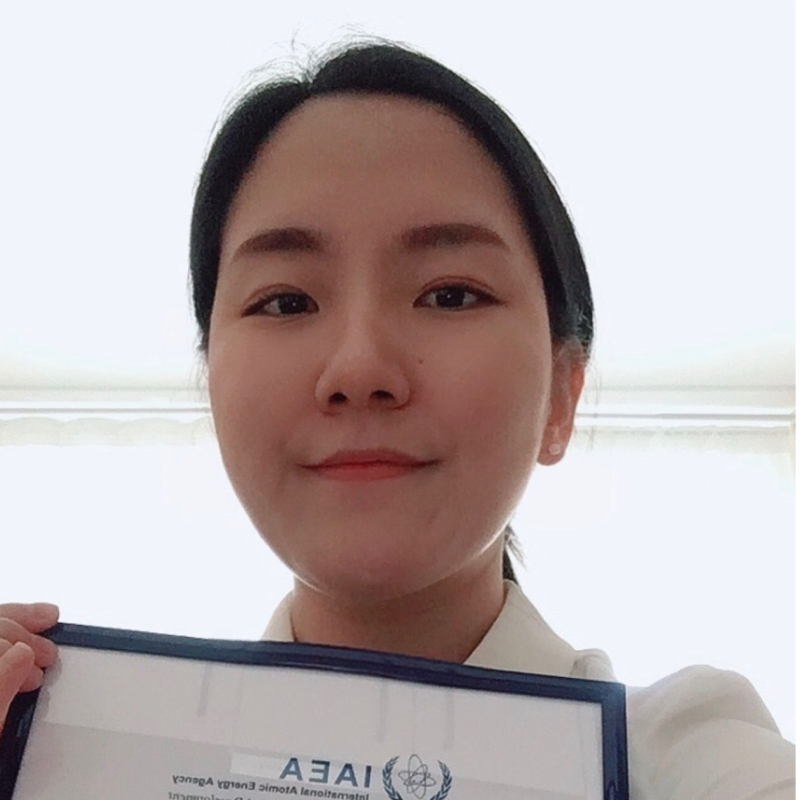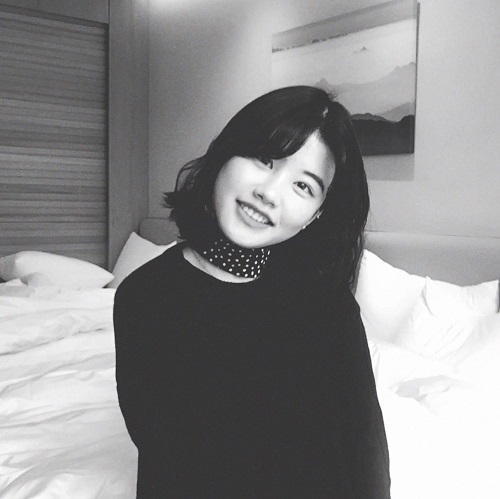Boys' Love
Asia’s nod to gay relationships?
by Gwyneth ChengBack at the start of 2020, a Boys' Love drama became a cult hit in Southeast Asia.
Produced by Thai channel GMMTV and titled 2gether: The Series, the tale of romance between two male university students achieved 100 million views on the Thai streaming platform LINE TV within two months of its release.
And those views don’t include people who watched it on YouTube, where episodes were live-streamed each Friday. The platform helped the show gain popularity beyond Thailand’s borders, and the hashtag #2GetherTheSeries became a trending Twitter topic in Indonesia, the Philippines, Malaysia, and Cambodia each time a new episode aired.

Poster for 2gether: The Series. Source: MoviePosterDB
Since its release, 2gether has garnered a massive fandom. Its lead actors, Vachirawit Chiva-aree and Metawin Opas-iamkajorn, have gained millions of followers on their social media accounts. This has made its main genre, Boys’ Love, more popular than ever in East and Southeast Asia.
The success of 2gether now prompts an important question: Does the show’s popularity mean that Asia has made a huge step towards accepting gay couples?
Before we can answer the question, we have to understand what Boys’ Love is.
More commonly known as “BL”, the genre, which originated in Japan, features the romantic and sexual relationships between two men. It first surfaced in Japanese mangas of the 1970s and has since grown in both complexity and popularity. BL can now be found in many different types of media, including mangas, animes, novels, television dramas, movies, and even video games.
Source: World of BL, Anime Planet
In the 1970s, BL was more commonly known as shōnen’ai, and its mangas focused more on relationships between adolescent boys. Female writers Takemiya Keiko and Hagio Moto produced the first shōnen’ai manga, and their stories ended up being read by millions.
Then, in the 1980s, a new type of shōnen’ai emerged. Labelled yaoi, these newer works depicted existing male characters from famous published manga and anime in romantic situations. The BL genre that we know today derives from these yaoi comics, albeit with better evolved storylines and characterisations.
Even though BL was already popular enough to be considered a legitimate commercial genre at this time, artist and author Ozaki Minami pushed it into far greater fame. She created a global frenzy with her BL manga Zetsuai 1989 (or Absolute Love 1989).
The popularity of the genre later reached another new high during the mid-2000s, when the internet made Japanese anime, manga, and novels easily accessible to the Western world.
At first, BL mainly spread through its written works. But the genre has more recently been thrust into the spotlight due to the rising fame of its television dramas. In particular, dramas produced in Thailand and Taiwan have managed to gather huge followings and massive fandoms, not only locally but also regionally.
Over the years, more BL dramas and films have been produced elsewhere in the region, as well.
Source: World of BL
In Thailand, BL first reached the small screen in 2013, but its popularity only shot up the following year with the show Lovesick: The Series. The show gathered an average of 3.8 million views per episode on Youtube. In 2016, another series named Sotus became a hit and, of course, 2gether became a regional phenomenon in 2020.
In Taiwan, the 2020 BL movie Your Name Engraved Herein became a major hit, becoming the first LGBTQ+ movie to make more than NT$100 million (just over US$3.6 million) upon its release. It’s eponymous theme song also became a hit, dominating radio charts among several Mandarin-speaking populations across the region, including Singapore.
Not quite. While BL dramas and films are huge in some communities in Asia, it would be too hasty to connect their popularity with social progress.
There are two main reasons for this:
Yes, there’s Taiwan and Thailand, which have both made great strides forward in legally accepting same-sex marriage. However, till today, Taiwan remains the first and only Asian country to legalise same-sex marriage. Thailand is well on its way, but it’s going to take a while before true changes are made to legislation.
Then there’s China, South Korea, and Japan, which produce relatively higher amounts of BL content but have populations that still largely condemn same-sex relationships.
Source: World of BL
Thus, while BL may be popular, this doesn’t mean Asia is much closer to accepting the people the genre represents.
Another major criticism of BL since its conception is that BL is too fantastical—it fetishizes gay characters and their relationships instead of properly representing them.
Sadly, there’s some truth to this claim. It all boils down to one simple fact: BL was not created for a gay audience. The genre may be all about the men, but ironically, its creators and consumers have largely been women.
Since its beginnings, BL’s homoerotic relationships in mangas and novels were written by young women for other young women—more than half of whom were straight. Even today, BL’s audiences are still largely female.
It wasn’t that the genre was created just for fun. In fact, it had a progressive purpose—just one that had nothing to do with queer people.
The women who made BL did so because they wanted to resist the traditional gender roles and expectations that patriarchal society placed on them. Women often saw themselves in the more feminine of the two male characters—or the one “with a female soul” and who lives life just like they do. This largely included falling in love with handsome men... without all the pressure that comes with being a woman.
This led BL down a very slippery slope, as there was no pressure to make these stories about gay men sensitive and nuanced. BL was meant for eye-candy and to create a version of the world women wanted to see—regardless of whether they actually supported gay relationships.
Facing criticism, many authors argue that BL works aren’t meant to be “real” anyway; it has been acknowledged that most BL stories reflect neither the real world nor the everyday lives of actual gay men. They are constructed, imagined worlds of female fantasy.
Thus BL itself, as well as its associated fame, turns out to be an imagined world that happens to include gay people—which does not necessarily indicate a social acceptance or even tolerance of gay men. Til today, gay people in many Asian countries, and particularly in Japan, still face stigmatization.
While it’s understandable for women to desire freedom from the prejudices of society, BL does this at the expense of gay relationships. This makes them invisible at best, and fetishized and violent at worst.
The genre surely has much room for improvement, but it’s too early to write it off as a huge mistake. There are signs that things are getting better and that more positive change will come.
Since the late 2000s, BL content has slowly become more complex and careful in its treatment of sensitive topics. With rising insistence on and demand for the proper representation of minority groups in Asia, a genre like BL may, hopefully, develop more nuance in its storylines or even hire more LGBTQ+ people in their cast and crew, as directors, scriptwriters, and authors attempt to stay relevant.
In fact, there is no better time than today to criticise and review the genre in an attempt to improve it. As BL becomes more prominent in the form of popular dramas and films—their main relationships feel ever more real to viewers all around the region.
Sure, BL films still follow scripts, and their storylines are often still fictional. But their characters are played by real people who look like everyone else—they’re no longer just lines on a page, or a bunch of descriptors in a novel. When human actors play characters with stories tied to real places that people know, this grounds the relationships on screen in reality for viewers. Eventually, people may let go of the sense that BL, or even gay couples, are just characters that exist in made-up worlds.

BL dramas naturally have a wider reach than their written counterparts and, with a bigger audience and more sensitive portrayals of same-sex relationships, people will talk about and come to accept this more.
More important, dramas and films have far bigger budgets and more sponsors than mangas and novels. Well-advertised and streamed by mainstream channels, these productions can give BL content an even greater sense of legitimacy. These days, people curious about BL can easily access its content via their televisions or computers, instead of having to rent mangas or buy accounts on manga websites to read them. BL dramas naturally have a wider reach than their written counterparts and, hopefully, with a bigger audience and more sensitive portrayals of same-sex relationships, people will talk about and come to accept this more.
With BL establishing itself as a force of nature in dramaland—a medium so important to many Asian communities today—people find themselves having to acknowledge its presence, whether they are regular watchers or not. This provides an opportunity for people to discuss gay relationships and, by extension, the gay community in general when talking about the latest big shows. What narratives about gay people will they be given, and what will they say themselves?
Admittedly, this is a small change. Even so, it’s still a big step from the “don’t ask, don’t tell” mentality that many in Asia have adopted when it comes to gender and sexual identities and expression.
Despite its many flaws, BL is a good starting point for change—and it’s important that we don’t simply dismiss BL as a mistake.
Let’s continue to watch the space. Discuss BL content with our peers. Provide constructive feedback on the stories told. With the right efforts, BL can become more than just “something different”—it can reshape conventional thinking about gay relationships by creating a new normal on our screens. Instead of just young women, these dramas can rightfully become a medium for gay people too, and maybe even nudge more LGBTQ+ genres and issues to the forefront.
With care from its newest waves of creators, BL can be a door to a world of progress on gender and sexuality issues, prompting greater recognition of a community that has always been part of the norm—and has been waiting for the rest of Asia to embrace it.
Harim is an energy data scientist. She learned data visualization on her own and is an avid Tableau user. She’s most passionate about low-carbon energy and solving climate change, the most important topic today. She also works with international NGOs to develop data visualizations on a range of topics concerning humanity’s progress.
Sunju is a Product Designer who provides better experience for users through observation and research. She loves to discover the needs and pain points that users are facing with, and solve them with clear and engaging direction. Also, communication and sharing ideas with others regardless of profession inspires her a lot in many aspects. Sunju is based in Seoul and has been working with colleagues and clients from various countries including US, Singapore and Korea.









